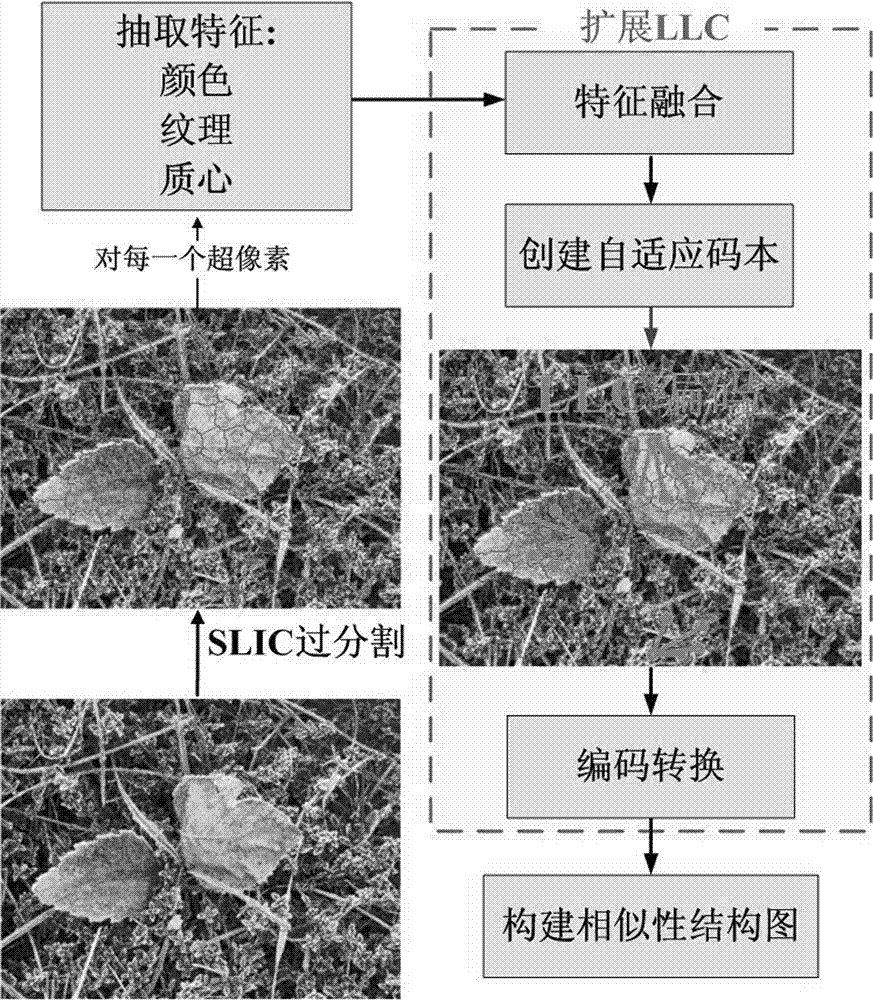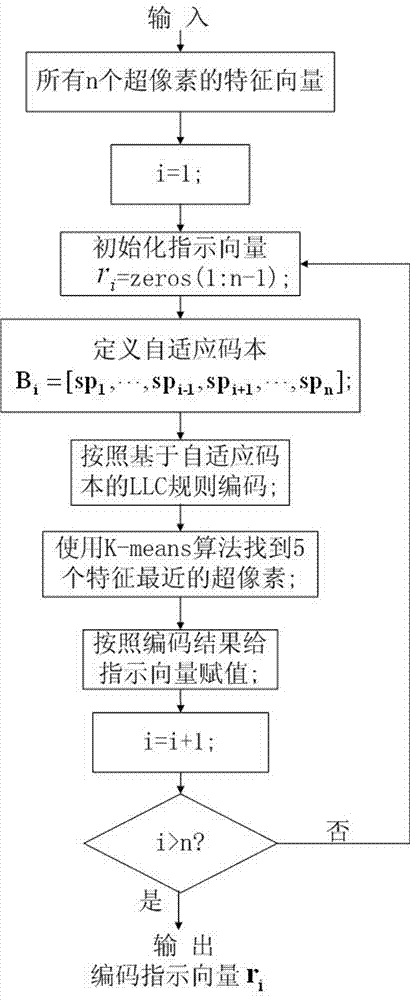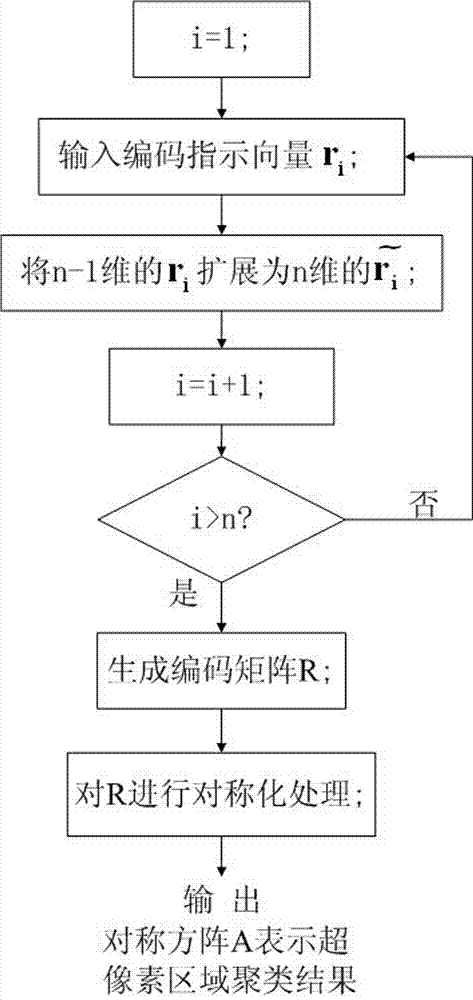Method for clustering image areas through LLC based on adaptive codebook
An adaptive codebook and image area technology, applied in image analysis, image data processing, instruments, etc., can solve problems such as excessive noise, blurred foreground boundaries, and increase the difficulty of foreground or target recognition, so as to simplify the coding process and improve The effect of detection, the effect of obvious performance improvement effect
- Summary
- Abstract
- Description
- Claims
- Application Information
AI Technical Summary
Problems solved by technology
Method used
Image
Examples
Embodiment Construction
[0063] The present invention will be further elaborated below in combination with specific embodiments.
[0064] The method for clustering image regions through adaptive codebook-based LLC involved in the present invention includes: original image region division and feature extraction, extended LLC for sparse coding of each superpixel image region, code conversion, and construction of a similarity structure Figure and other steps.
[0065] The superpixel region segmentation involved in the present invention adopts the current pixel clustering technology with better performance——SLIC method. The superpixels after clustering are not only compact inside, but also can effectively preserve the salient object edges, ensuring the final generated salient image. Smoother and clearer display of object outlines.
[0066] The superpixel feature extraction involved in the present invention selects the Lab color, RGB color, LBP texture and Gabor wavelet of the image superpixel region to f...
PUM
 Login to View More
Login to View More Abstract
Description
Claims
Application Information
 Login to View More
Login to View More - Generate Ideas
- Intellectual Property
- Life Sciences
- Materials
- Tech Scout
- Unparalleled Data Quality
- Higher Quality Content
- 60% Fewer Hallucinations
Browse by: Latest US Patents, China's latest patents, Technical Efficacy Thesaurus, Application Domain, Technology Topic, Popular Technical Reports.
© 2025 PatSnap. All rights reserved.Legal|Privacy policy|Modern Slavery Act Transparency Statement|Sitemap|About US| Contact US: help@patsnap.com



